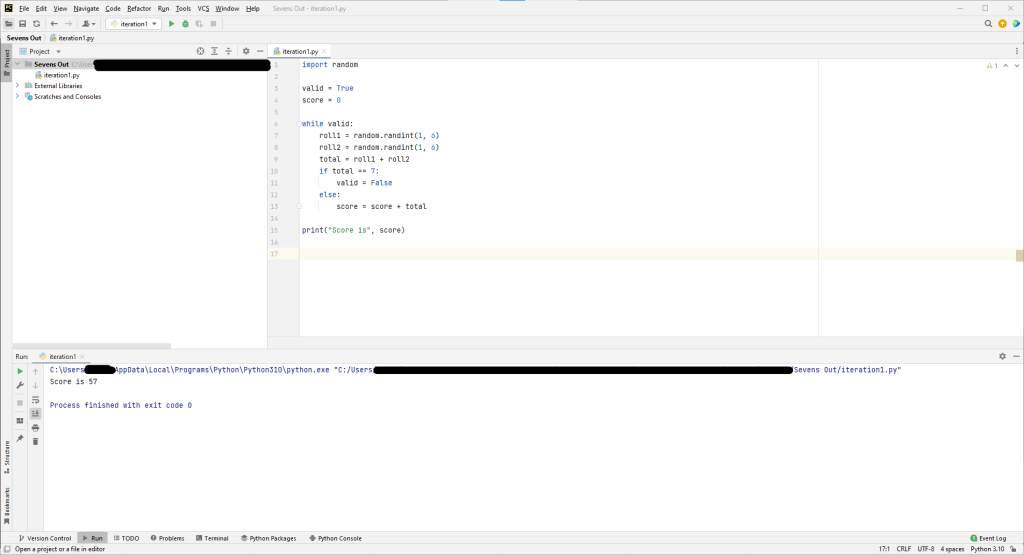Introduction
In this series of posts we will look at how to code a simple dice game in Python, starting with the initial concept, all the way through to the coding and adding extension features.

The game that we will develop is a simple two dice game called Sevens out. The game rules from lovetoknow.com are as follows:
Game rules
- The players decide upon a winning score, this could be 500 or 1,000.
- Each player, in turn, throws the dice.
- Each player rolls and continues to roll the dice until they throw a 7.
- They score the sum of all the numbers thrown before the 7.
- Players announce their tally after each throw and once they have thrown a 7, their score is noted on the score sheet.
- Doubles score double the value. For example, if a player who throws two 4s making eight, their score is 16.
- The player reaches the pre-arranged total first is the winner.
Iteration 1
Rather than attempting to develop the entire game in one pass, we will develop the game in multiple stages using an iterative development approach.
For the first iteration we will get one round of dice rolling completed for a single player.
Before writing any code we will develop a high-level design using pseudocode. This allows us to consider the key logical parts of the algorithmic solution without having to get bogged downed in the finer details of exactly how to code this in Python.
The pseudocode for our proposed first iteration is shown below. The most important part of the pseudocode is that it conveys the intended logic of the problem we are solving. For example the third and fourth lines of pseudocode indicates that a random number between 1 and 6 needs to be generated. How this is done does not matter at this stage – indeed the solution is dependent on the coding language being used, whereas pseudocode should be coding language independent.
set score to 0
loop
set roll1 to random number between 1 and 6
set roll2 to random number between 1 and 6
set total to roll1 + roll2
if total = 7
then
exit the loop
else
set score to score + total
end if
end loop
output score
The resulting code in Python is almost a line for line translation of the pseudocode. One noteworthy change is the addition of a Boolean-valued variable, valid, which is used to indicate whether all rolls to date are valid (do not add up to 7). The while loop will continue whilst this variable is true. When a total of 7 is rolled the value of the variable becomes false. The use of this loop termination variable is highlighted in the code below. The relationship between the remainder of the code and the pseudocode should hopefully be evident.
import random
valid = True
score = 0
while valid:
roll1 = random.randint(1, 6)
roll2 = random.randint(1, 6)
total = roll1 + roll2
if total == 7:
valid = False
else:
score = score + total
print("Score is", score)
The screenshot below shows the code running in the Pycharm IDE. The code runs until a total of 7 is rolled and then prints the resulting score.
